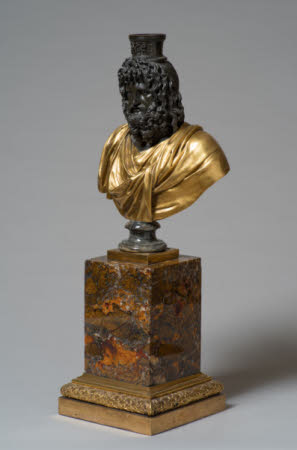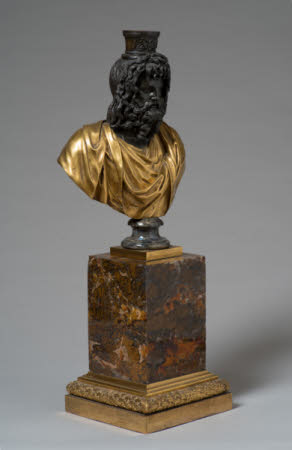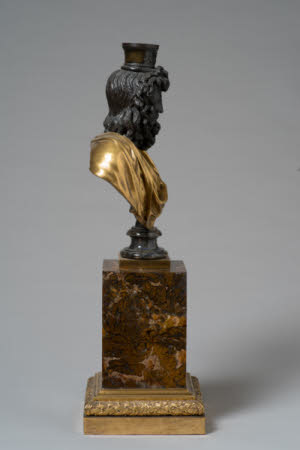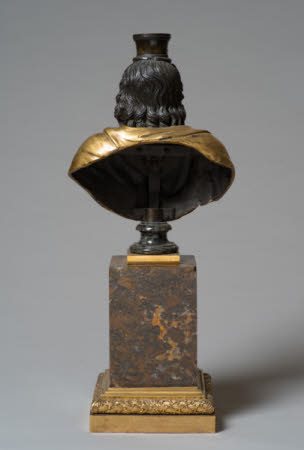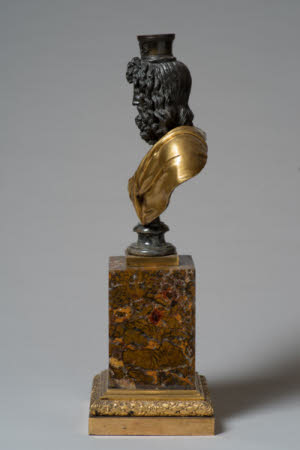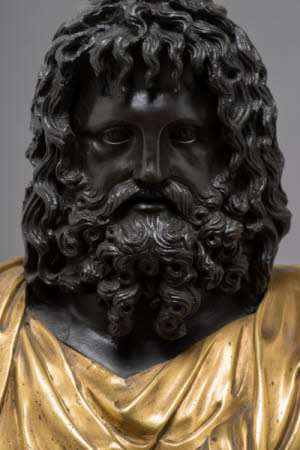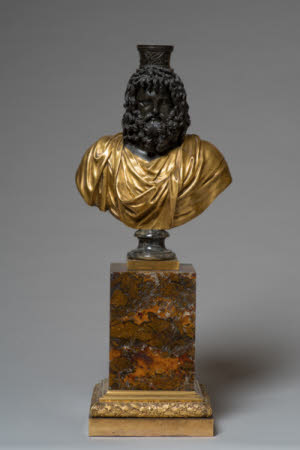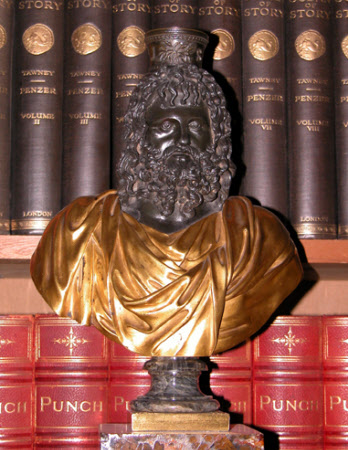Jupiter Serapis
Italian School
Category
Art / Sculpture
Date
1630 - 1700 (bust) - 1775 - 1800 (remounted)
Materials
Bronze and ormolu on jasper and ormolu
Measurements
517 x 166 x 163 mm
Place of origin
Italy
Order this imageCollection
Anglesey Abbey, Cambridgeshire
NT 515020
Summary
Bronze and ormolu on jasper and ormolu plinth, Jupiter Serapis, Italian, bust c. 1630-1700; remounted c. 1775-1800. A bronze bust of the god Jupiter Serapis, depicted as a mature bearded man, the head and bust sections separately cast, the bust section gilded. The bust mounted on a marble socle, the main section probably Sicilian jasper. The original bust of Jupiter was probably made in Italy in the 17th century; the bust was modelled with a place for a basket on Jupiter’s head, so it was probably intended from the start to represent Jupiter Serapis. The bust was however re-mounted on a Neo-classical socle in the late 18th century, the bronze bust itself set onto a small rectangular gilt-bronze base, with leaf decoration in the spandrels, in turn mounted upon a tall rectangular base in red and purple jasper, with a gilt-bronze foot. Probably at the time of this Neo-classical mounting, a new bronze basket was added to Jupiter’s head, emphasising his identity as an image of Jupiter Serapis. The basket is decorated with a design of ears of corn, either side of which are the initials J and S (for Jupiter Serapis). A rivet in the surface of Jupiter’s tunic, towards the bottom.
Full description
Jupiter Serapis is a combination of two major gods, the Jupiter of the Roman religion, and Serapis, the greatest Egyptian deity. Serapis took various forms over time, but became conflated with Jupiter during the Roman imperial period. He is often shown wearing a basket or calathus on his head, symbolic of the bounty he brought to the human race. The ears of grain depicted on the calathus atop Jupiter’s head in the Anglesey Abbey bust refer to Egypt’s role as the bread basket of the ancient world.
Provenance
Bequeathed to the National Trust by Huttleston Rogers Broughton, 1st Lord Fairhaven (1896-1966) with the house and the rest of the contents.
Credit line
Anglesey Abbey, The Fairhaven Collection (The National Trust)
Marks and inscriptions
On calathus atop Jupiter’s head.: JS
Makers and roles
Italian School, sculptor
References
Christie, Manson & Woods 1971: The National Trust, Anglesey Abbey, Cambridge. Inventory: Furniture, Textiles, Porcelain, Bronzes, Sculpture and Garden Ornaments’, 1971, p. 137, Silver Strong Room.
